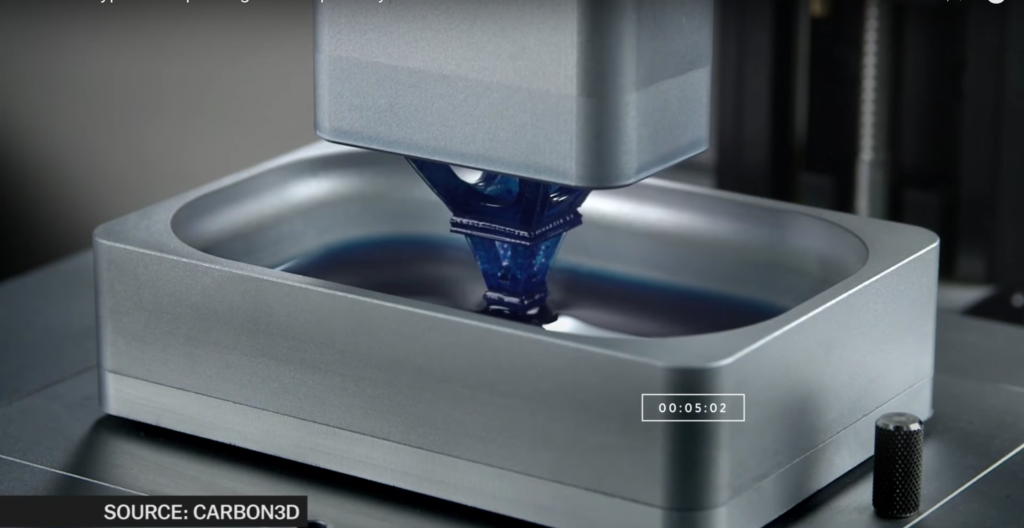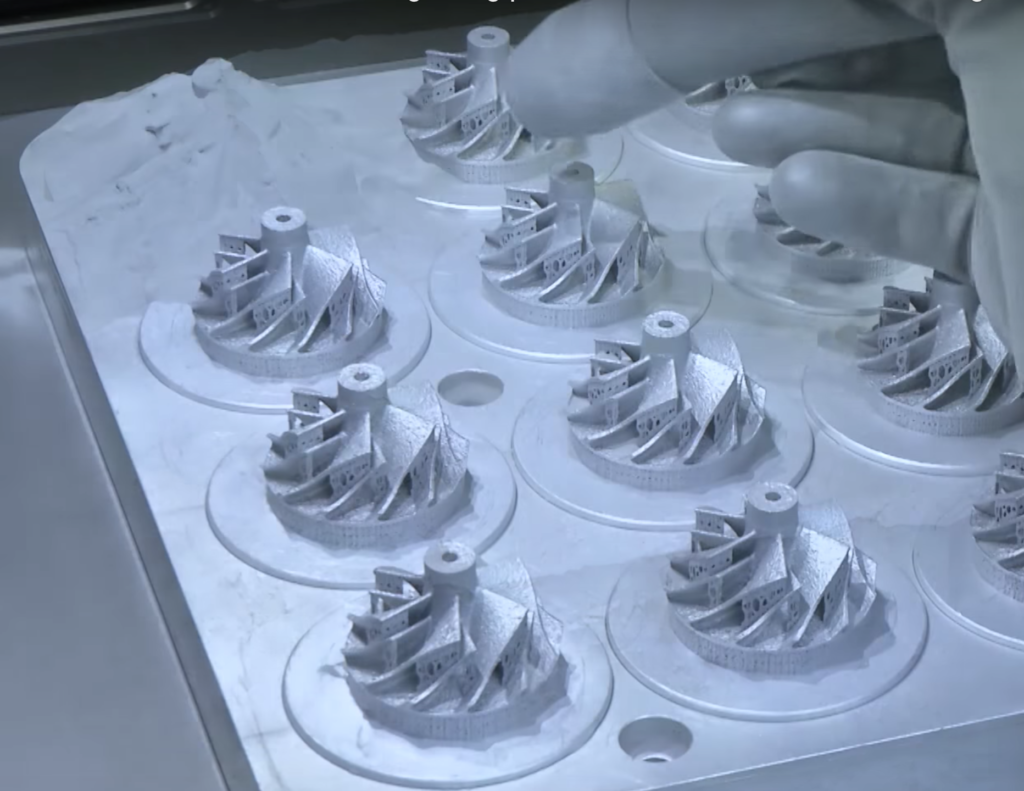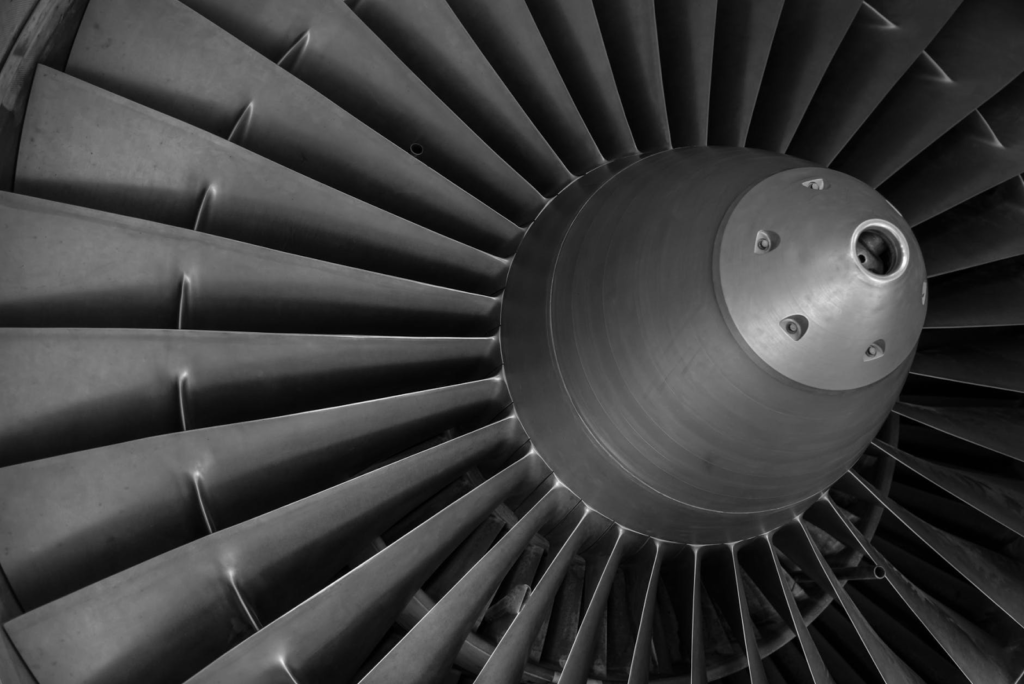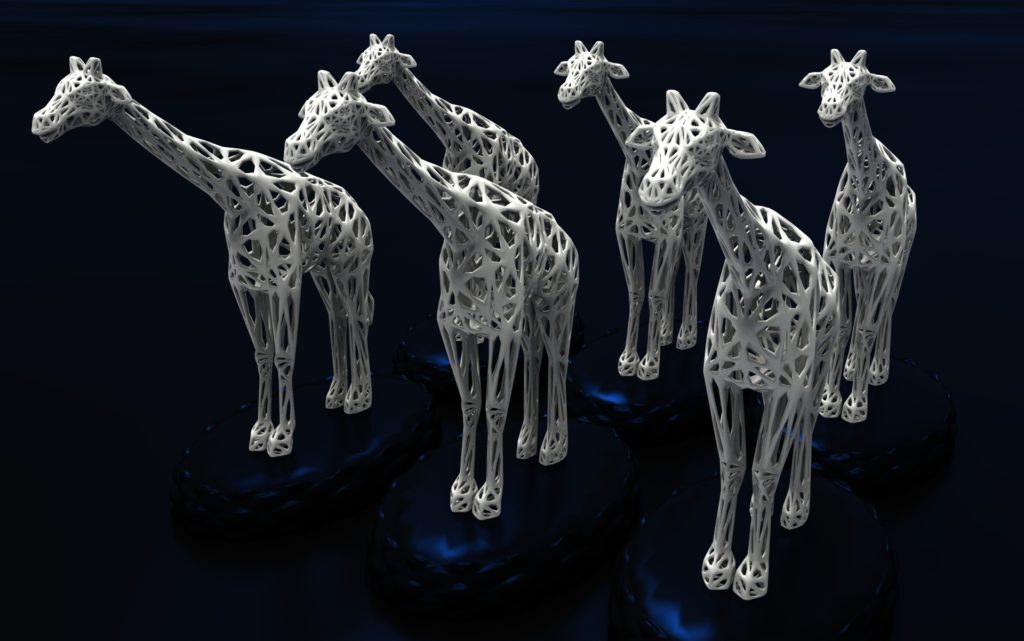Often we hear the terms 3D Printing and Additive Manufacturing being thrown around and discussed but, do most know that there are numerous additive technologies beyond the desktop 3D printer? Most of these technologies have yet to prove to be superior options over traditional manufacturing technologies like injection molding or cnc machining but can produce prototypes in the fraction of the amount of time of conventional tooling.
With advancements in CAD software and talented CAD modelers/engineers, additive manufacturing is certainly a valuable step in taking a design from paper sketches to finished products. Depending on the design and material needed, there is an additive manufacturing solution that can help you get from digital design to functional prototype in a reduced amount of time. The following are a few of the most popular and exciting additive technologies available today.
Vat Photopolymerisation
Stereolithography (SLA) – Harnessing the power of light. Stereolithography (SLA) is a type of additive technology where photosensitive resins are cured layer by layer using precision ultraviolet lasers to build highly detailed objects. The process starts with a vat of liquid curable photopolymer and an object platform. The UV laser traces a cross-section of the design pattern across the surface of the resin, curing it into a solid. From here, there are two different SLA techniques. “Elevator” and “Bottom Up”.
In the Elevator method, after UV light cures the first resin layer, the platform drops a layer length below the surface of the resin, a wiper spreads the next layer evenly and the UV light maps the object once more creating the next layer. This continues until the object is complete.
In the “Bottom Up” method, the object platform behaves in the opposite manner of the “Elevator”. In this technique, the laser is positioned below the resin tank, projecting UV light upwards mapping the design. Once a layer is cured and complete, the printer separates the cured polymer from the bottom of the vat and the platform rises a layer distance. This continues while the object is printed from the ground, hence Bottom Up. This technique allows printers to make objects taller than the vat, resulting in cost savings on resin since only enough resin is needed to submerge the layer closests to the uv-light through the printing process.
What is SLA used for? SLA objects are used from medical models to creating molds for injection molding. A disadvantage of SLA is that photopolymers can be expensive and not cost effective for many designs. Read more about SLA services and 3D printing.
Powder Bed Fusion
Selective Laser Sintering (SLS) – Selective Laser Sintering is one of the most fascinating additive manufacturing processes since it uses a combination of powder and lasers that can create multiple objects/parts simultaneously. Objects begin the process as metal or plastic powder in a feeder and is distributed across a build platform by a recoating blade to create a layer. The overhead laser selectively sinters a cross-section of the layer, effectively solidifying the selected powder. The platform drops a layer thickness (approximately 0.1mm) and a new powder layer is deposited on top of the previously mapped layer.
The process is repeated until the build platform is completely filled with powder. Once completed, the powder container is unpacked and the sintered parts are removed from the unsintered powder (which can be reused) and cleaned for additional finishing or end use.
An advantage of SLS over other additive methods is that the unsintered powder in the build platform eliminates the need for support structure in complex designs saving costs on materials and finishing labor. Since SLS does not require support structures, 3D cad modelers have a wider range of freedom when designing parts or objects.
What is SLS used for? Design applications include; integrated hinges, interlocking parts, tanks, threads, and batch manufacturing. Read more on SLS services and design with metal alloys.
Binder Jetting
Binder Jetting does not produce the strongest components or is the best for mechanical part prototyping but what it lacks in strength, it makes up for in design aesthetics and complexity. The level of detail that can be achieved through Binder Jetting is what makes it a favorite among skilled CAD designers.
Instead of layers being fused together via heat or uv light like SLS or SLA, Binder Jetting uses a liquid binding agent to product solid structures. Powdered materials like; metals, ceramics and sands are distributed across build platforms while the adhesive is applied via liquid jet to the layer similar to an inkjet paper printer. Once the adhesive is applied by the printhead, the build platform is lowered, the next layer of powdered material is distributed and the process is repeated until the part is complete. Depending on the material used, additional curing, sintering, infiltrating or other post processing is required to finish the object.
Since Binder Jetting does not utilize heat, a cool-down process is not required, eliminating the chance for parts to warp or distort. Applications include; full color prototyping, green parts, casting molds and cores. One of the most common uses for Binder Jetting is large scale sand casting patterns.

Directed Energy Deposition
Directed Energy Deposition (DED) can be used to construct 3D parts from polymers, glass or ceramics but is mostly utilized to build with metals and alloys. Although DED can be used to build stand alone parts or models, where it’s most valuable is in the repairing of existing 3D metal objects/parts.
DED is best explained as a combination of 3D Printing and traditional welding. A DED machine consists of a multi-axis printhead that carries a metal wire supply or powder nozzle along with a high powered electron beam. While being guided by cad software, the metal wire or metal powder is deposited along the object structure, immediately fused by the electron beam and repeated layer by layer until the print is completed. Since the electron beam and supply nozzle are mounted to a multi axis arm, the metal wire or powder can be applied from any angle which is why it is the best additive technology for metal repair purposes.
An example of its application is the repairing of blades on damaged turbine fans. Instead of replacing the entire fan, the damaged area can be cleanly cut out and new metal can be deposited in layers via DED roughly rebuilding the fan structure. Once the damaged area is replaced with new raw metal, it can be milled and finished with other cnc and machining techniques saving tremendous costs when compared to replacing specialty parts.
CAD modeling for DED is unique where you may have to edit a part that had been designed using an obsolete CAD software or completely reverse engineer your model in order to properly design the repairs needed.
 Fused Deposition Modeling (FDM – 3D Printing) or Material Extrusion
Fused Deposition Modeling (FDM – 3D Printing) or Material Extrusion
Fused Deposition Modeling (FDM) is probably the most well known and popular form of additive manufacturing. Many of the consumer grade desktop 3D printers you see on the market today utilize FDM and speciality filaments to produce prototypes, models and end use parts.
FDM begins with a print platform, extrusion nozzle and a material filament usually in the form of wound wire. (Materials can include; plastics, metals and composites.) With the guidance of 3D CAD software, the extrusion nozzle is guided along the x-y axis, laying down the design. Once the layer is complete, either the build platform or the nozzle will drop or raise along the z-axis (depending on the kind of FDM printer) to begin laying down the next layer of the design. This process is repeated until the 3D object is complete.
One drawback of FDM is when printing parts that may have components that require additional support structures. An example would be printing a turbine fan that has raised blades. Each blade would require support structuring to be printed in order to hold them up while the remainder of the component is finished. Fortunately, most 3D CAD software will automatically generate these support structures and they can be printed using a water soluble filament that is removed in post production.
Learn more about FDM services for rapid prototyping and or find out more about industrial design services to utilize additive manufacturing for your new product.

